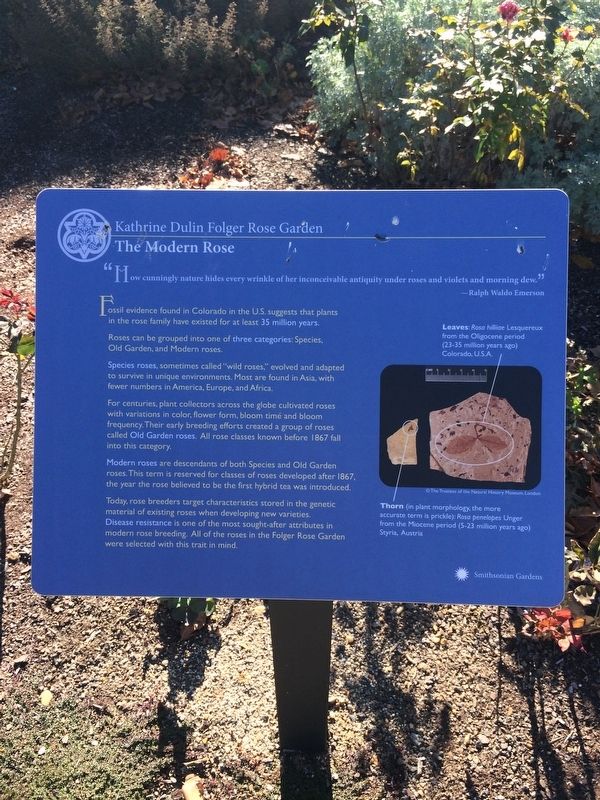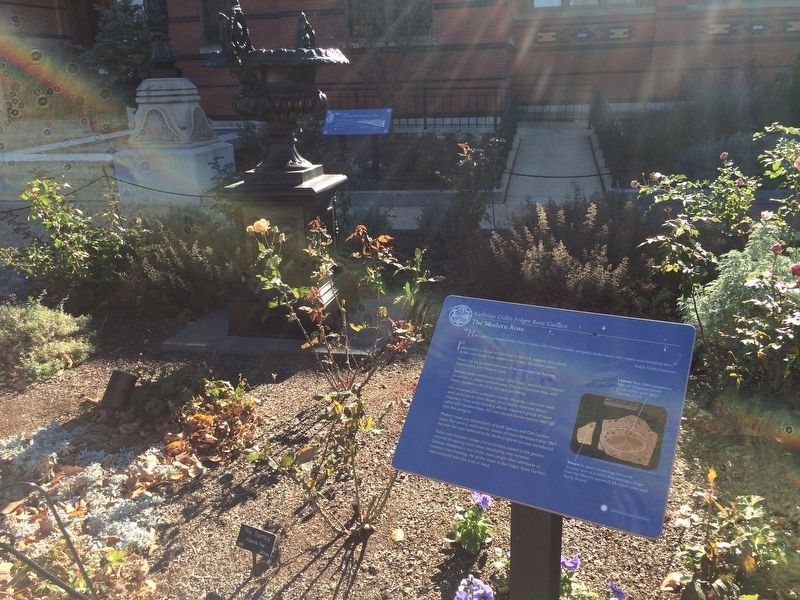The National Mall in Southwest Washington in Washington, District of Columbia — The American Northeast (Mid-Atlantic)
The Modern Rose
Kathrine Dulin Folger Rose Garden
"How cunningly nature hides every wrinkle of her inconceivable antiquity under roses and violets and morning dew."
—Ralph Waldo Emerson
Fossil evidence found in Colorado in the U.S. suggests that plants in the rose family have existed for at least 35 million years.
Roses can be grouped into one of three categories: Species, Old Garden, and Modern roses.
Species roses, sometimes called "wild roses," evolved and adapted to survive in unique environments. Most are found in Asia, with fewer numbers in America, Europe, and Africa.
For centuries, plant collectors across the globe cultivated roses with variations in color, flower form, bloom time and bloom frequency. Their early breeding efforts created a group of roses called Old Garden roses. All rose classes known before 1867 fall into this category.
Modern roses are descendants of both Species and Old Garden roses. This term is reserved for classes of roses developed after 1867, the year the rose believed to be the first hybrid tea was introduced.
Today, rose breeders target characteristics stored in the genetic material of existing roses when developing new varieties. Disease resistance is one of the most sought-after attributes in modern rose breeding. All of the roses in the Folger Rose Garden were selected with this trait in mind.
Leaves: Rosa hilliiae Lesquereux from the Oligocene period (23-35 million years ago)
Colorado, USA
Thorn (in plant morphology, the more accurate term is prickle): Rose penelopes Unger from the Miocene period (5-23 million years ago)
Styria, Austria
Erected 1998 by Smithsonian Gardens.
Topics. This historical marker is listed in these topic lists: Horticulture & Forestry • Science & Medicine. A significant historical year for this entry is 1867.
Location. 38° 53.326′ N, 77° 1.475′ W. Marker is in Southwest Washington in Washington, District of Columbia. It is in The National Mall. Marker can be reached from Jefferson Drive Southwest west of 7th Street Southwest, on the right when traveling east. Touch for map. Marker is at or near this postal address: 990 Jefferson Drive Southwest, Washington DC 20560, United States of America. Touch for directions.
Other nearby markers. At least 8 other markers are within walking distance of this marker. Welcome to the Smithsonian's Arts + Industries Building (a few steps from this marker); A Common Language (within shouting distance of this marker); An Apple is a Rose? (within shouting distance of this marker); a different marker also named A Common Language (within shouting distance of this marker); Carousel on the Mall, Washington, D.C.
Credits. This page was last revised on January 30, 2023. It was originally submitted on November 28, 2017, by Devry Becker Jones of Washington, District of Columbia. This page has been viewed 182 times since then and 12 times this year. Photos: 1, 2. submitted on November 28, 2017, by Devry Becker Jones of Washington, District of Columbia. • Bill Pfingsten was the editor who published this page.

